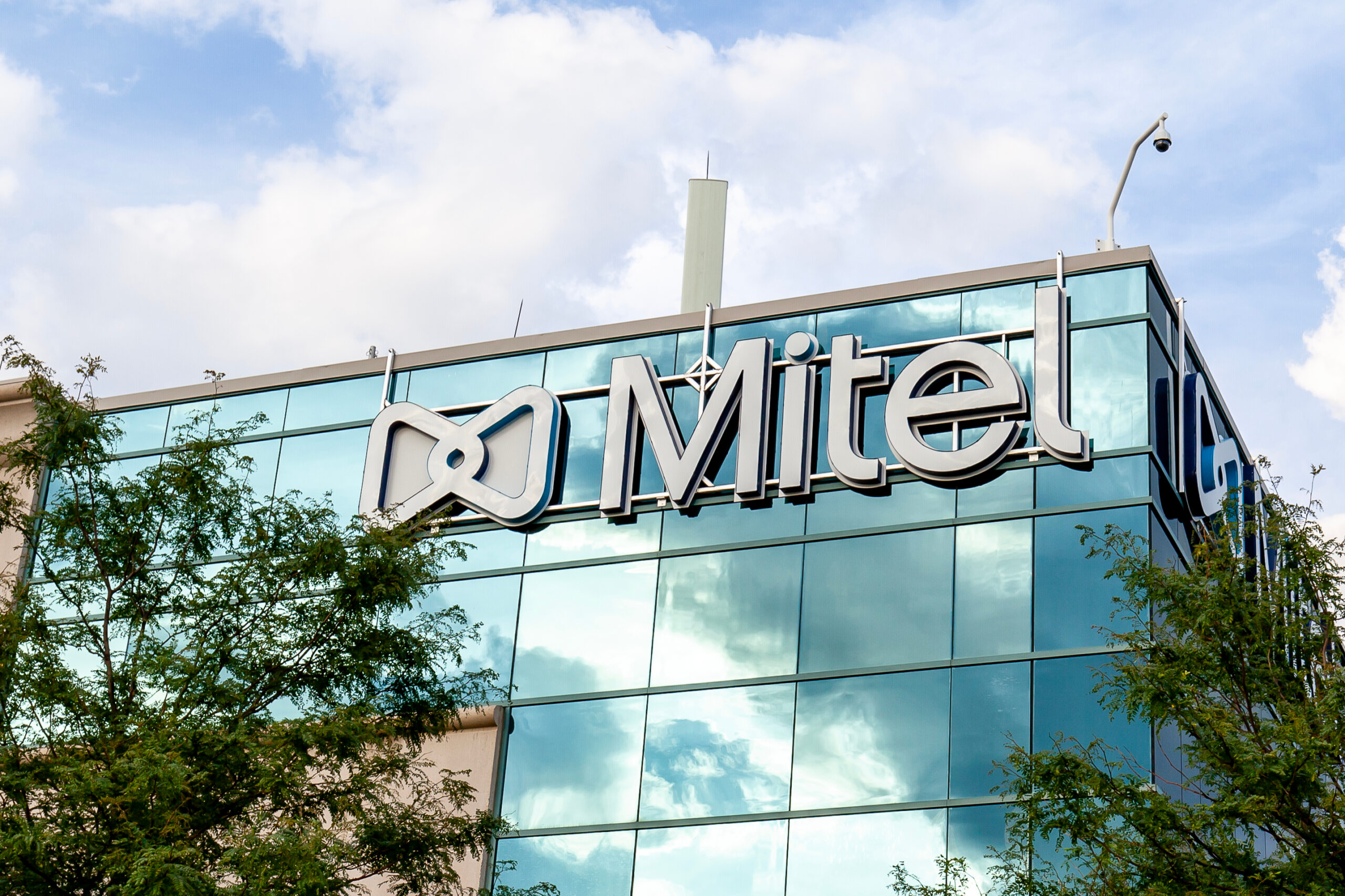In the ever-evolving landscape of technology, some visionaries stand apart, their stories etching a profound mark in the annals of history. Sir Terry Matthews, a name synonymous with innovation, is one such luminary. His remarkable journey from a humble beginning to founding the tech giant Mitel is a tale of foresight, determination, and impeccable timing.
Terry’s story begins with a strong foundation in engineering, particularly in wireless technology. His early passion for wireless communication became evident at the tender age of 15, setting the stage for a journey that would span more than five decades.

The turning point arrived when he was chosen to work at the General Post Office lab named Radio Wave Development. Today, it is known as BT. Within this lab, Terry was exposed to a world of complexity that few could comprehend. He navigated the intricacies of waveguides, some no larger than a finger.
With a wealth of knowledge and a passion for innovation, Terry turned a new leaf in his life by moving to Ottawa, Canada, from the United Kingdom. Armed with nothing but a dream and $3,000 borrowed against his house mortgage, he set out to carve his place in the world of technology.
As they say, fortune favoures the bold, and Terry’s arrival in Canada coincided with a pivotal global shift in telecommunications. The world was moving away from rotary dial phones to the era of push-button phones. It was ripe with possibilities, and Terry quickly seized this rising wave.
In the world of innovation, timing is paramount, and Terry had an innate sense of it. His profound knowledge of tone receivers positioned him perfectly for the technological revolution that loomed on the horizon.
Simultaneously, a serendipitous collaboration with his close friend Mike Cowpland, who was delving into the potential of operational amplifiers (op amps) and integrated circuits with resistors and capacitors, paved the way for a breakthrough. These op amps, compact and efficient integrated circuits, became the building blocks for a remarkably small tone receiver.
Timing, however, was one of many factors at play. Terry possessed a knack for recognizing opportunities where others saw challenges.
“In the 1970s, the TTL (Transistor-Transistor Logic) devices era was in full swing. These digital components were power-hungry, operating at five volts. I was aware of a game-changing development in the UK—the System X public exchange system. This innovative exchange system boasted all the essential features of a public exchange, complete with redundant power supplies to ensure uninterrupted operation,” says Terry.
However, a pivotal requirement would shape the course of Mitel’s journey. All the digital circuitry within this exchange system needed to operate at a five-volt level. In the backdrop of this, another innovation was quietly making waves—CMOS (Complementary Metal-Oxide-Semiconductor) technology. CMOS was known for its remarkable voltage tolerance and minimal power consumption compared to its predecessor, TTL devices. This shift from TTL to CMOS held the promise of transformative change.
Recognizing the immense potential of CMOS technology, Terry embarked on a journey that would take him from Ottawa to London, where the course of telecommunications history would be altered forever.
The stage was set in West London, where he met with senior executives from GEC and Plessey—companies that were no strangers to Terry’s vision. He had, after all, been selling tone receivers to Plessey, creating a foundation of trust and collaboration.
As the discussions unfolded, a momentous decision was made—to collaborate on the ambitious task of replacing the TTL devices in the SystemX public exchange with its CMOS counterparts. It was a move that promised to revolutionize the industry.
Remarkably, in less than two months, the transition was complete. The circuit cards in the SystemX exchange were seamlessly replaced with CMOS devices, and the results were nothing short of spectacular. The SystemX exchange operated flawlessly, and it was a testament to the transformative power of CMOS technology.
The SystemX public exchange, powered by Terry’s semiconductor chips, became a game-changer in the telecommunications industry. It was a journey that shaped Mitel’s legacy and left an indelible mark on the ever-evolving landscape of telecommunications. Mitel, a name synonymous with innovation, had been born, and its journey had only just begun.
“Mitel started with a small PBX system that would redefine the way businesses communicated. We named it the SX 200, which became a game-changer in telecommunications,” says Terry.
The SX 200 was not just a single innovation—it was a series of groundbreaking advancements that would shape the future of PBX systems. It came in various configurations, each tailored to meet the diverse needs of businesses. The SX 200 for 200 extensions, a version for 100 extensions, and the innovative wall-mounted system known as the SX 20 were just a few examples of Mitel’s tech prowess.
“But it was the SX10 that truly captured the imagination of those who encountered it. Resembling an operator’s console, it left many puzzled. They asked, “Where’s the switching system?” The answer was as astonishing as the question itself—the entire switching system was ingeniously contained within the console,” says Terry.
This innovation was even more remarkable because it was built around a Motorola microprocessor that made nearly all of its functionalities software-driven. The implications of this breakthrough were profound, and geographical boundaries did not limit them.
Mitel had a global vision in an era where telephony was often regionally fragmented. The software-driven approach that had become its hallmark allowed the company to adapt to various telephony standards across the world.
Features like dial tone, busy tone, and signaling systems were all software-driven, a concept that was revolutionary in its own right. With this newfound flexibility, Mitel ventured into markets far and wide. The company made its mark from North America to India, proving that innovation knows no borders.
Perfect timing
Terry shares the secret sauce behind running a successful ICT business—a recipe honed through years of experience and visionary thinking. Timing, as he emphasizes, is the first and foremost ingredient in this recipe for success.
“It’s not just about having the right idea; it’s about having it at the right moment. In the dynamic world of technology, trends and waves come and go, and savvy entrepreneur must align their vision with the prevailing technological wave,” he says.
Timing also intertwines with the size of the company. According to Terry, larger corporations often carry the baggage of existing products and clients. Rapid technological shifts can disrupt their operations. Startups, on the other hand, can pivot quickly, unburdened by legacy commitments.
The next essential component in Terry’s recipe is assembling the dream team. Success hinges on a cohesive unit working in harmony. Trust and collaboration among team members are paramount. Without these, even the most brilliant ideas may falter.
Another key ingredient is a simple yet powerful practice—listening and learning from potential clients. Terry underscores the importance of taking notes during conversations. “Sometimes, what’s crucial to a client may not be immediately evident. By documenting these insights, I ensure that nothing is overlooked.”
Returning to the concept of ownership, Terry’s recipe includes this unique ingredient. By granting ownership to his dedicated team members, he not only motivated them but also aligned their interests with the company’s success. They became deeply invested in the venture’s growth, working tirelessly to bring innovative products to life.
“The final, most rewarding part of the recipe is the gratification of seeing your efforts bear fruit. In just a decade, Mitel’s value skyrocketed, turning every $1 share into a staggering two and a half million dollars. Those early team members, who had believed in the venture when money was scarce, reaped the rewards of their dedication,” says Terry.
A global stage beckons
Mitel’s journey to global prominence began with a pivotal decision. Recognizing the need to expand its horizons beyond Canada, Mitel ventured into the international market, leading to work with some of the world’s largest telecom giants, including BT and China Telecom.
As Mitel expanded its reach, it encountered a challenge—bridging language and cultural gaps. With over 200 countries in the world, each with its unique culture, language, and government regulations, the task was daunting. Dial tones and busy tones varied from place to place, adding to the complexity.
Terry had an unconventional solution. He decided to create joint ventures with local companies in foreign markets. This innovative approach allowed Mitel to adapt to each region’s specific needs and nuances.
One such joint venture took place in Mexico, where Mitel partnered with Telmex, a major service provider. Together, they established production facilities in Guadalajara, manufacturing Mitel products tailored to the Mexican market.
In 1978, another significant joint venture unfolded in Beijing, China, this time with China Telecom. This strategic partnership opened doors to an expansive market and positioned Mitel as a global telecommunications force.
“I firmly believe in the philosophy of going global. By forming these strategic alliances with local companies, Mitel gained a deep understanding of regional dynamics and established strong footholds in diverse markets,” says Terry.
Mitel, now the second-largest supplier in the enterprise UCC market following its merger with Unify, is also recognized as the pioneer behind real-time cloud-based communication, fundamentally transforming our experience of synchronized video conversations today.
“The evolution demanded a complete restructuring of the cloud computing framework, a challenge that Mitel wholeheartedly embraced two decades ago. While this transformative achievement may not have garnered widespread recognition, it’s crucial to comprehend how innovations like these have reshaped our digital landscape,” says Terry
But what’s next for Mitel, you ask? Terry says to specialize, focusing on specific verticals like healthcare, banking, and government departments. Each sector has its unique needs and challenges, requiring tailored solutions.
“And here’s the secret sauce—quality. It’s not just about doing something; it’s about doing it right. Reliability is the name of the game,” he adds.
So, as Mitel continues to chart its course through the ever-shifting technology landscape, one thing remains clear: the future is vertical, and Mitel is at the forefront, ready to redefine how businesses communicate, one vertical at a time.









Discussion about this post